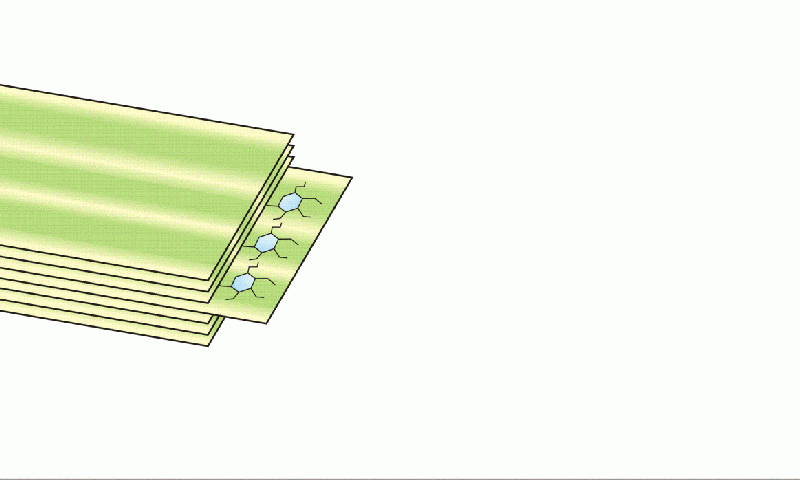2-D piezoelectric applications of nanocellulose

In coming years, nanocellulose (NC) could attract attention from industrial researchers as the market value is estimated to be $530 million worldwide by 2020. The process of development and functionalization of green NC materials is promising because of their unique optomechanical features. However, are also applications based on the electric response of NC. Results published in Scientific Reports with the participation of ICN2 researchers provide a foundation for new applications based on 2D-NC with a predicted piezoelectric-response ~ pm V-1. This result could rank NC at the level of currently used bulk piezoelectrics like α-quartz and 2-D materials like MoSe2 or doped graphene. The first author of the article is Dr Yamila García, and the last one ICREA Research prof. Dr Clivia M. Sotomayor-Torres, Group leader of the ICN2 Phononic and Photonic Nanostructures Group.
"We are too big," as Richard Feynman pointed out in 1959, referring to the difficulties of developing nanotechnology. To overcome this restriction, a theoretical framework has been developed for the investigation of electric field profiles with interatomic resolution and thus to understand the fundamentals of the electromechanical coupling at the nanoscale. Remarkably, the mean-field descriptor obtained with the methodology would also complete the latest definition of hydrogen bonds since it is the first effective approach in quantifying the electrical nature of such interactions.
An "atom by atom" understanding of electrical forces managing directional bonds is needed to engineer materials by means of highly selected nanoscale-oriented mechanisms. Deepening on the understanding of 2-D NC as a piezoelectric system could facilitate new openings for the nanotechnology community to advance NC applications, i.e. straightforwardly introducing electronic-base sensing and actuating applications. Looking to the future, areas like molecular biology or genetic engineering would be benefited by the study of electrical forces within life-essential hydrogen bonds.
More information:
Yamila García, Yasser B. Ruiz-Blanco, Yovani Marrero-Ponce and Clivia M. Sotomayor-Torres. Orthotropic Piezoelectricity in 2D Nanocellulose. Scientific Reports doi:10.1038/srep34616.
Àlex Argemí
Institut Català de Nanociència i Nanotecnologia (ICN2)
Centro de Excelencia Severo Ochoa
Marketing and Communication Manager
Email: alex.argemi@icn2.cat
Tel.: +34 937 372 607
www.icn2.cat
Postal Address:
Edifici ICN2
Campus UAB
08193 Bellaterra - Barcelona (Spain)
Provided by Catalan Institute of Nanoscience and Nanotechnology